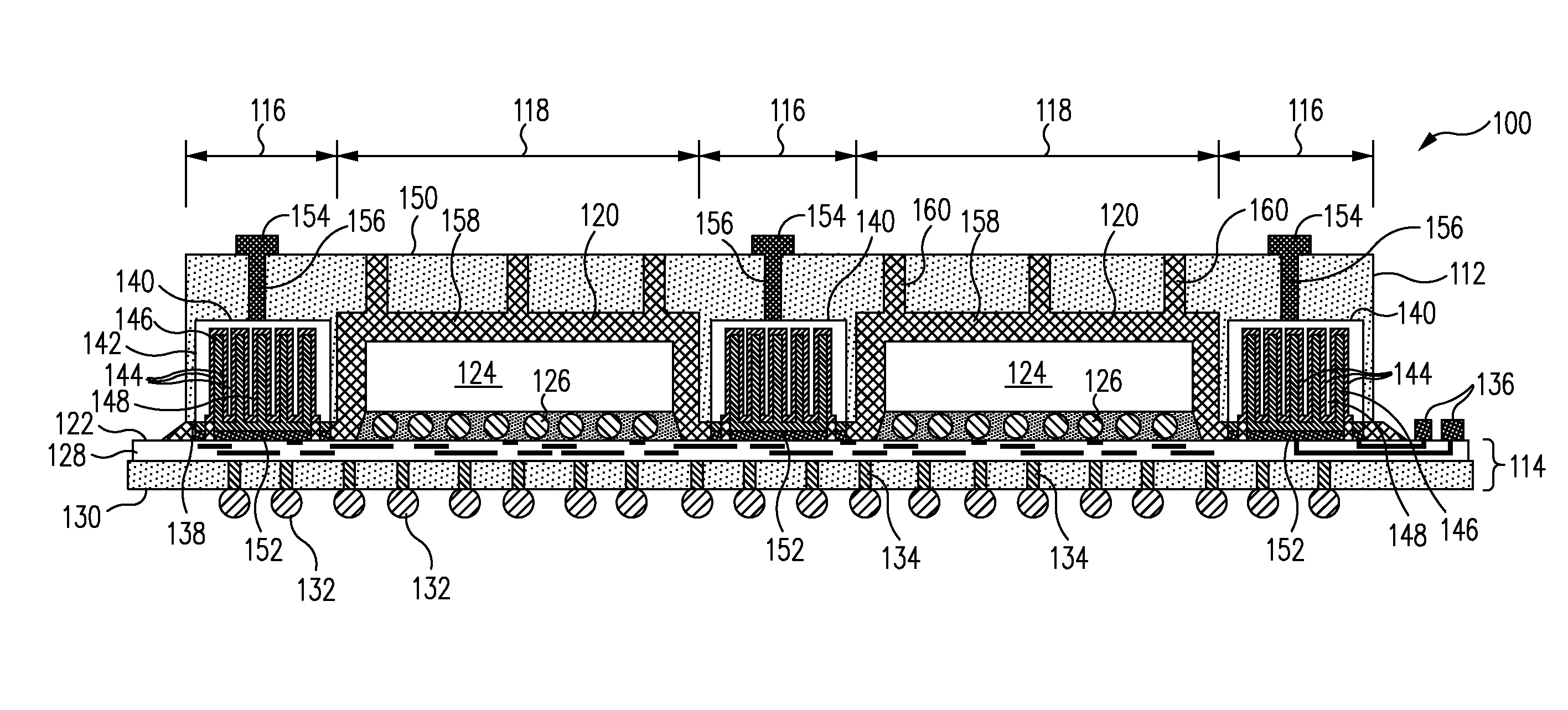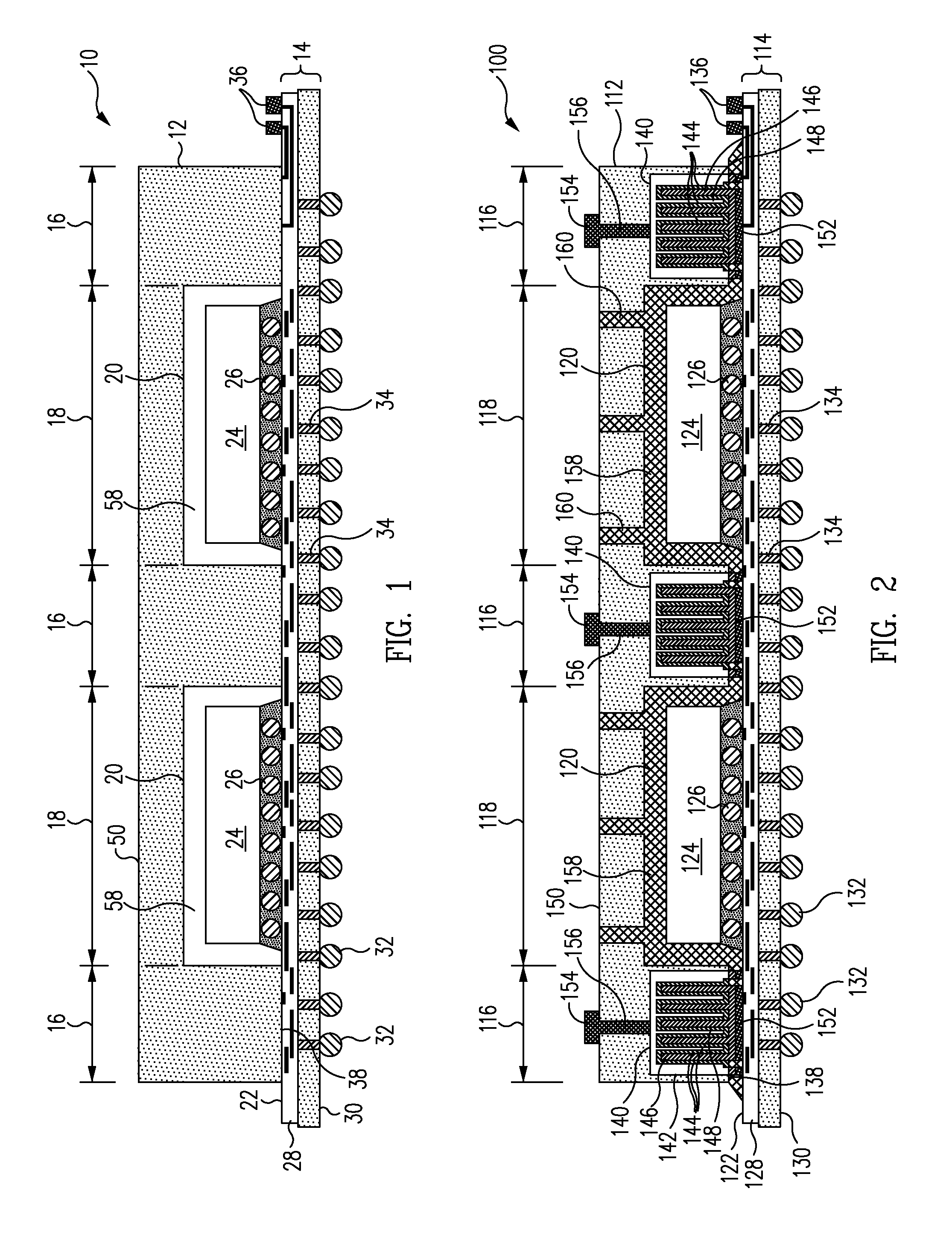Making electrical components in handle wafers of integrated circuit packages
- Summary
- Abstract
- Description
- Claims
- Application Information
AI Technical Summary
Benefits of technology
Problems solved by technology
Method used
Image
Examples
Embodiment Construction
[0019]This disclosure provides embodiments of methods for making semiconductor packages in which electrical components, viz., metal-insulator-metal (MIM) capacitors, are fabricated within selected regions of a first substrate, such as a handle wafer, that contains cavities for housing integrated circuit dies or packages mounted on a second, associated substrate, e.g., an interposer wafer. The methods result in a more efficient use of package volume, and hence, semiconductor packages of a reduced size and / or enhanced functionality.
[0020]FIG. 1 is a vertical cross-sectional view of an example embodiment of an IC package 10 of a type disclosed in commonly owned U.S. patent application Ser. No. 14 / 214,365 above, and to which the methods and apparatus of the present invention can be advantageously applied. As discussed above, the package 10 comprises a “sandwich” of a first substrate, or “handle wafer”12, and a second substrate, or “interposer”14. The handle wafer 12 includes at least on...
PUM
 Login to View More
Login to View More Abstract
Description
Claims
Application Information
 Login to View More
Login to View More - R&D
- Intellectual Property
- Life Sciences
- Materials
- Tech Scout
- Unparalleled Data Quality
- Higher Quality Content
- 60% Fewer Hallucinations
Browse by: Latest US Patents, China's latest patents, Technical Efficacy Thesaurus, Application Domain, Technology Topic, Popular Technical Reports.
© 2025 PatSnap. All rights reserved.Legal|Privacy policy|Modern Slavery Act Transparency Statement|Sitemap|About US| Contact US: help@patsnap.com



